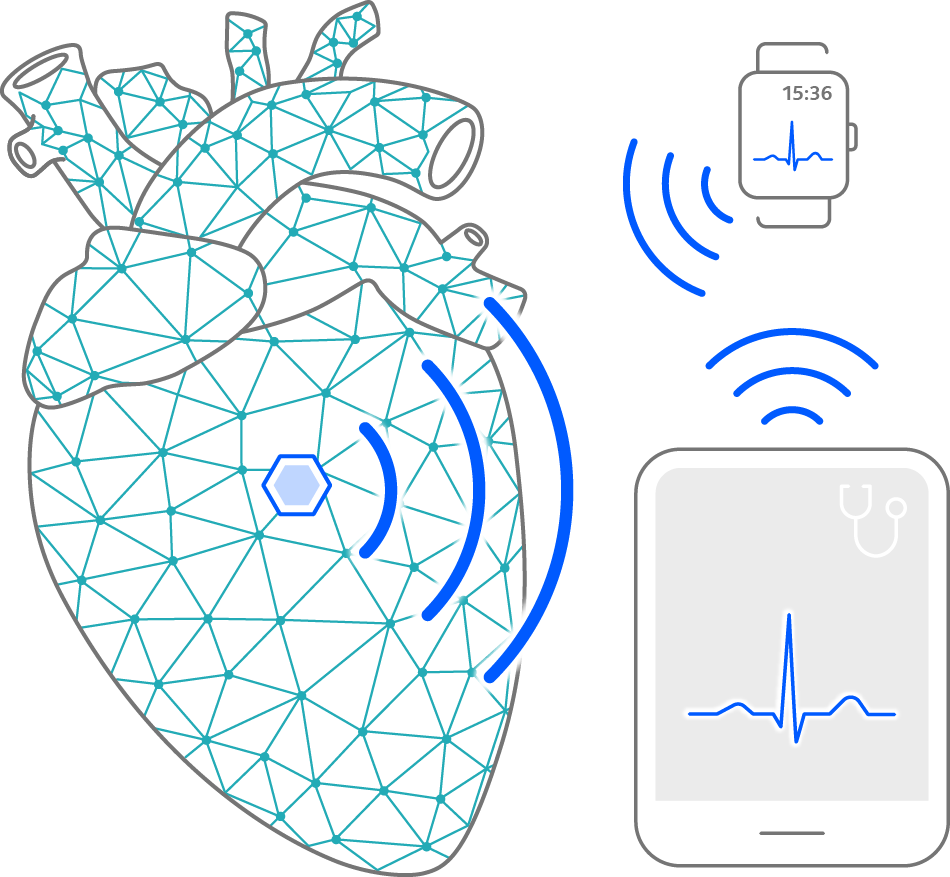Highly specialized radio cells provide the critical link in healthcare applications such as cardiac pacing
What is this research about?
6G will permit wireless to be used as an invisible cable, achieving the same level of latency and reliability as dedicated wires to support life-critical services. We call these extreme-connectivity systems in-X subnetworks.

Subnetworks able to operate autonomously even when out of coverage of an overlay wide area network
6G-enabled cardiac pacing avoids the need for invasive surgery, minimizing the risk of infection for an enhanced quality of life
What are some possible use cases?
In-X subnetworks could enable flexible, modular robots in industrial IoT. They could provide the links between actuators on robot arms, giving them much broader ranges of motion as well as allowing groups of robots to coordinate high precision operations.
These subnetworks could replace the cables that link the life-critical functions in our vehicles, for instance braking, acceleration and assisted-driving sensors. This could potentially lower vehicle weights and reduce maintenance costs while preserving service reliability.
In-X could keep our hearts beating and our limbs moving by providing the critical link in healthcare applications such as cardiac pacing or muscle control for disabled patients.

What are the main challenges?
A large amount of spectrum is needed for making the in-X concept a reality because more spectral bandwidth allows for more robust connections, which in turn provides higher fault tolerances.
Wireless is a shared medium, prone to detrimental effects such as fading, noise and interference – all of which could compromise the integrity of an in-X subnetwork connection.
New updated system design and configuration are needed to enable 6G to support use cases with extreme requirements such as latency loop cycles below 100 μs with nine-times reliability and extremely high device density for future IoT deployments.
Which technologies could help to overcome these challenges?
In our vision, all highly sensitive connectivity should be in-X, meaning it is provided by highly specialized radio cells installed within the entity where the application runs. These specialized radio cells must be able to operate autonomously, even when outside the coverage of an overlay wide area network. They would keep critical traffic local, minimizing latency.
In-X subnetworks would be based on a proactive radio design that follows an act-before-fail approach exploiting channel hopping and packet repetition. A smart radio resource management would then counteract interference in very dense scenarios, providing robustness against non-cellular interference created by malicious attackers like jammers.
Read our white paper and blog post
